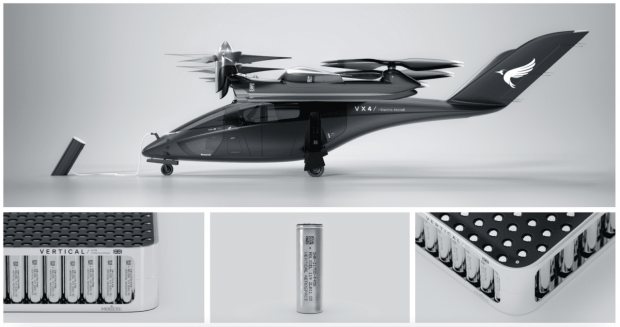
Breaking News
 James O'Keefe: My entire speech at AmericaFest 2025. We're not stopping. Join us to expose..
James O'Keefe: My entire speech at AmericaFest 2025. We're not stopping. Join us to expose..
 U.S. vs. Chinese Military Comparison – Focus on Asia-Taiwan Scenario
U.S. vs. Chinese Military Comparison – Focus on Asia-Taiwan Scenario
 DoJ Sues Four More States for Failing To Produce Voter-roll Data
DoJ Sues Four More States for Failing To Produce Voter-roll Data
 World's Largest Aviation Giant Abandons Google Over Security Concerns
World's Largest Aviation Giant Abandons Google Over Security Concerns
Top Tech News
 Perfect Aircrete, Kitchen Ingredients.
Perfect Aircrete, Kitchen Ingredients.
 Futuristic pixel-raising display lets you feel what's onscreen
Futuristic pixel-raising display lets you feel what's onscreen
 Cutting-Edge Facility Generates Pure Water and Hydrogen Fuel from Seawater for Mere Pennies
Cutting-Edge Facility Generates Pure Water and Hydrogen Fuel from Seawater for Mere Pennies
 This tiny dev board is packed with features for ambitious makers
This tiny dev board is packed with features for ambitious makers
 Scientists Discover Gel to Regrow Tooth Enamel
Scientists Discover Gel to Regrow Tooth Enamel
 Vitamin C and Dandelion Root Killing Cancer Cells -- as Former CDC Director Calls for COVID-19...
Vitamin C and Dandelion Root Killing Cancer Cells -- as Former CDC Director Calls for COVID-19...
 Galactic Brain: US firm plans space-based data centers, power grid to challenge China
Galactic Brain: US firm plans space-based data centers, power grid to challenge China
 A microbial cleanup for glyphosate just earned a patent. Here's why that matters
A microbial cleanup for glyphosate just earned a patent. Here's why that matters
 Japan Breaks Internet Speed Record with 5 Million Times Faster Data Transfer
Japan Breaks Internet Speed Record with 5 Million Times Faster Data Transfer
Fast-charging lithium-sulfur battery for eVTOLs nears production

The team's new lithium-sulfur battery tech is designed to deliver roughly twice the energy density of lithium-ion (Li-ion) batteries, as well as speedy charging and discharging – enabling the sort of power delivery needed in the skies.
Until now, lithium-sulfur (Li-S) batteries have held promise for high-density energy storage, but they suffer from slow charging and discharging. The Monash researchers figured out that using a polyvinylpyrrolidone complex – a unified chemical compound with different properties than each of its three individual components – as a facilitator accelerates chemical reactions within the battery.
This leads to faster charging and higher energy densities, as they noted in a paper published in Advanced Energy Materials. According to the team, the new batteries are not only faster and denser, but also significantly lighter and cheaper to produce.
"With discoveries centered on readily available materials, we have the opportunity to transition to manufacturing," said Professor Mainak Majumder. That's a nod to a clever discovery the researchers made as they developed this faster battery. PhD candidate Maleesha Nishshanke noted, "Inspired by the chemistry of betadine, a common household antiseptic, we found a way to accelerate the charge and discharge rates."
It's interesting to note that while we've been using lithium-ion batteries in everything from cars to smartwatches after they were invented in 1980, lithium-sulfur batteries were first developed some 20 years earlier. However, several drawbacks arose due to their internal chemistry, and that's prevented them from being widely adopted.
Because they use sulfur as a cathode and lithium or lithium-ion as an anode, Li-S batteries don't evenly re-deposit lithium on the anode during recharging. Chemical deposits that spread from the lithium anode degrade both the anode and electrolyte, leading to fewer charge cycles (less than half of a Li-ion battery), reduced power delivery, and the chance of short circuits or even fires.
With innovations over the years and Monash's latest breakthrough, we might soon see Li-S batteries adopted more widely. The researchers are confident their lightweight tech would make a great fit in drones; they plan to demonstrate its capability in commercial drones and eVTOL aircraft within a year.
"Our catalyst has significantly enhanced the C-rate (the rate of discharge relative to its max capacity) performance of Li-S batteries, demonstrated in early proof-of-concept prototype cells," Professor Majumder explained. "With commercial scaling and larger cell production, this technology could deliver energy densities up to 400 Wh/kg. This makes it well-suited for applications requiring dynamic performance, such as aviation, where batteries must handle high C-rates during take-off and efficiently switch to low C-rates during cruising."

 Advanced Propulsion Resources Part 1 of 2
Advanced Propulsion Resources Part 1 of 2

